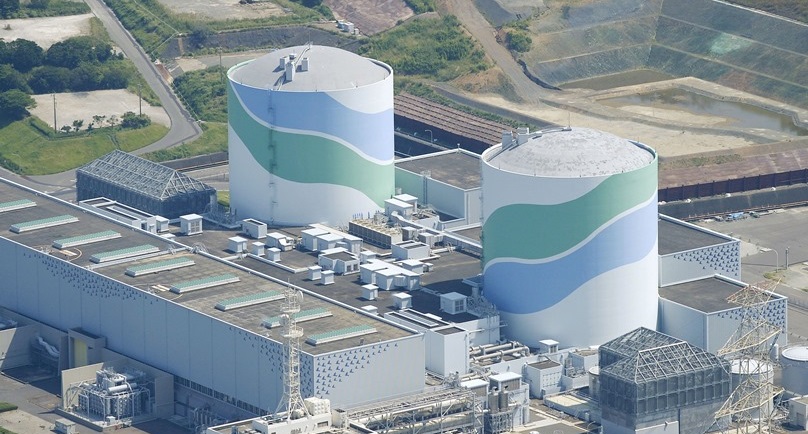An aerial view shows the No.1 (L) and No.2 reactor buildings at Kyushu Electric Power’s Sendai nuclear power station in Satsumasendai, Kagoshima prefecture, Japan, August 11, 2015, in this photo taken by Kyodo. REUTERS/Kyodo
By Aaron Sheldrick and Issei Kato
TOKYO/SATSUMASENDAI (Reuters) – Japan has restarted a nuclear reactor for the first time under new safety standards put in place since the Fukushima disaster in 2011, as Prime Minister Shinzo Abe seeks to reassure a nervous public that the industry is now safe.
Abe and much of Japanese industry want reactors to be switched on again to cut fuel bills, but opinion polls show a majority of the public oppose the move after the nuclear crisis triggered by the earthquake and tsunami four years ago.
Kyushu Electric Power began the restart on Tuesday of the No. 1 reactor at its Sendai plant, a spokesman said. The reactor will take a few days to reach full power if all goes to plan.
The head of Japan’s atomic watchdog said that new safety rules meant a repeat of the Fukushima disaster would not happen, but protesters outside the Sendai plant are not convinced.
“You will need to change where you evacuate to depending on the direction of the wind. The current evacuation plan is nonsense,” said Shouhei Nomura, a 79-year-old former worker at a nuclear plant equipment maker, who now opposes atomic energy and is living in a protest camp near the plant on Kyushu island.
Abe has said only reactors that were deemed to have cleared the “world’s most stringent regulation standards” would be allowed to restart.
The Sendai plant is the furthest away of Japan’s reactors from the capital Tokyo, where protesters regularly gather outside Abe’s official residence to oppose atomic energy.
The protesters in Sendai included Naoto Kan, who was prime minister during the Fukushima crisis and now fiercely opposes nuclear power.
In the worst nuclear disaster since Chernobyl 25 years earlier, the meltdowns at the Fukushima Daiichi plant caused a release of radioactive material and forced 160,000 from their homes, with many never to return.
The crisis shocked Japan and the world was transfixed as the government and the Fukushima operator, Tokyo Electric Power (Tepco), badly fumbled their initial response.
While two reactors have since been restarted for a fueling cycle under the old standards in 2012, the whole sector has been shut down since September 2013, forcing Japan to import record amounts of expensive liquefied natural gas.
Ahead of Tuesday’s restart, a few hundred people rallied outside the Sendai plant amid tight security.
“Human life and nature are more precious than the economy,” a young woman told the national broadcaster.
Of Japan’s 25 reactors at 15 plants for which operators have applied for permission to restart, only five at three stations have been cleared for restart.
The Sendai reactor has been idled for more than four years and engineers say there is a risk of equipment failure causing early shut downs.
Typical outages last a couple of months for refueling and up to six months for periodic inspections, while for longer shutdowns specific preparations have to be in place, said John Large, chief executive of Large & Associates, a nuclear engineering consultancy.
(With additional reporting by Yuka Obayashi and Kiyoshi Takenaka; Editing by Ed Davies)
Copyright 2015 Thomson Reuters. Click for Restrictions.


